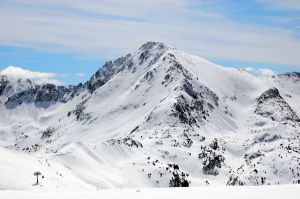Small Countries Series: Wheelchair Accessible Hotels in Andorra
Posted April 19th, 2010 in access guides, Accessible Travel and hotel reviewsGood morning, folks! A little while ago when we did access guides for the Spanish and French Pyrenees I promised a post on accessible travel in the Principality of Andorra, but I honestly didn’t know if it would work out. After all, it’s a beautiful country, but there’s not a whole lot of it! But in such a small area, with only about 80,000 people (about nine times less than New York City!) I discovered two things I hadn’t counted on: remarkable diversity (local languages include Catalan, Spanish, French, and Portuguese) and a formidable number of accessible hotels. Let’s check it out!
AndorraMania is the main website you want to check out on this trip. It’s the Internet directory of Andorra and is very thorough! It includes hotels, apartments, and campsites with detailed information on each one. Though the search function is not especially helpful, many of the hotels have disabled access facilities; it’s just a matter of poking around a little. Since the information is available in all of the native languages as well as English, it’s much easier to navigate this than many of the other Andorran sites out there, which may only provide Spanish and French.
Here are some of the top choices I found for handicapped travelers:
Hotel IBIS: Near the center of the country; 6 disabled access rooms;
Petit Hotel: A smaller, three-star offering in the northeast; 1 disabled access room;
Hotel Carlton Plaza: A five-star hotel in the capital, it has spacious suites for wheelchair users.
Ski Plaza Hotel: A four-star hotel with 115 rooms total, and an unspecified number with wheelchair access;
And there are also some leads on accessible attractions in the country:
The National Automobile Museum: Offers a history of vehicles from 1880s-era steam engines to the modern era. The official site touts it as one of the most important collections in southern Europe, and it includes 60 vehicles, 80 motorbikes, and 100 bicycles. The museum offers “partial” disabled access.
The Rossel Forge: Built in the 1840s, Rossel Forge was one of the last functioning forges in Andorra at the time of its closure in 1876. It now serves as a museum that unveils the secrets of the modern iron ingot industry, with equipment demonstrations and an audiovisual tour. The facility has disabled access.
For more information on culture and goings-on in the principality, check out About Andorra, a public initiative to improve tourism and raise awareness about the country. Once again, the search functions provided throughout the site makes finding accessible restaurants and attractions a snap. With over 200 restaurants in the database, you can find over 100 that categorize themselves as offering disability-friendly dining. This includes French, Spanish, other European cuisine as well as pizzerias, family-style restaurants and many more, a huge variety to choose from for any gourmand.
More “small countries” to come on Disabled Travelers. Cheers – and adventure on!
Si

